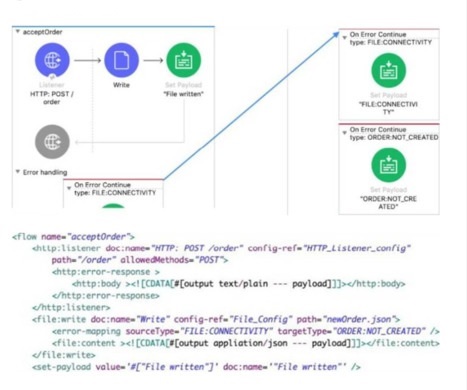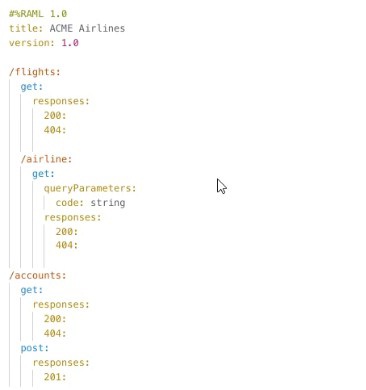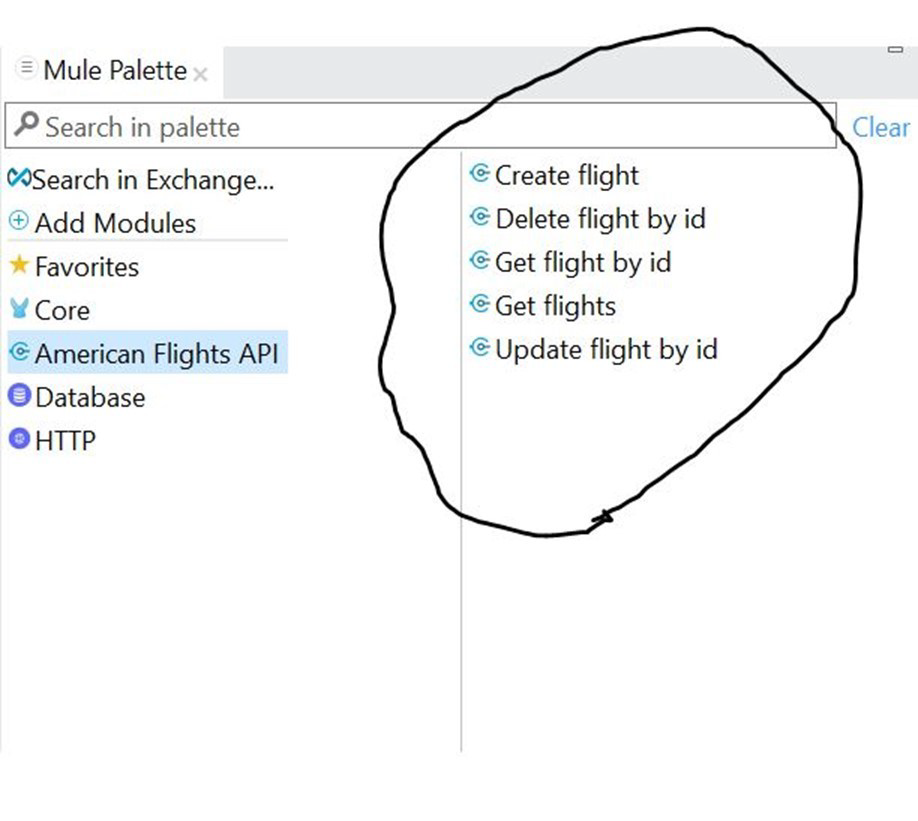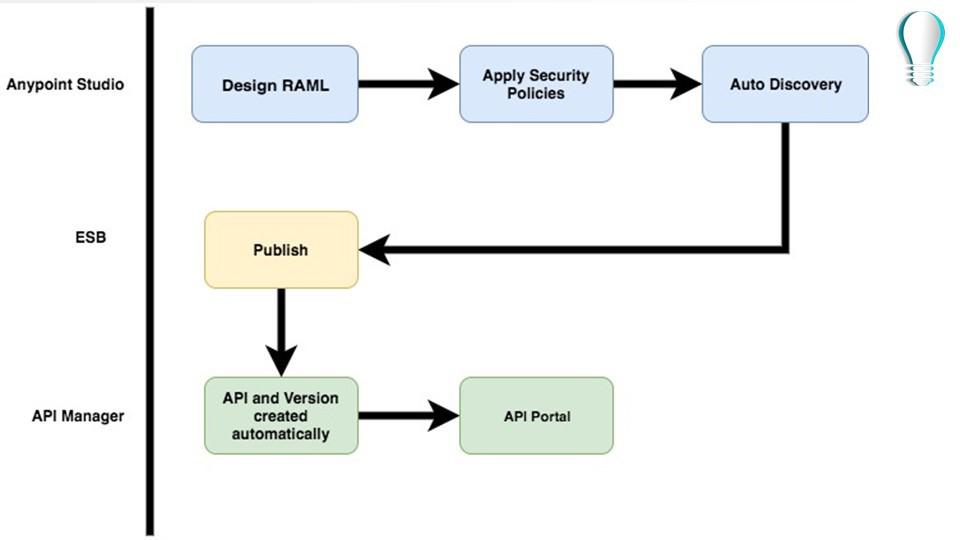Refer to the exhibit.
What is the correct syntax to add an employee ID as aURI parameter in an HTTP Listener
path?
A.
(employeelD)
B.
${emp!oyeelD}
C.
{employeelD}
D.
# [employeelD]
{employeelD}
Refer to the exhibits.

The Mule application does NOT define any global error handlers. The Validation component in the private flow throws an error. What response message is returned to a web client request to the main flow's HTTP Listener?
A. Child error
B. Parent error
C. Validation Error
D. Parent completed
Refer to the exhibit.

The input array of strings is passed to the batch job, which does NOT do any filtering or aggregating. What payload is logged by the Logger component?
A. Summary report of processed records
B. [ "Apple", "Banana" ]
C. [ "Apple12", "Banana12" ]
D. [ "Apple1", "Banana1", 2 ]
Refer to the exhibits.

How many private flows does APIKIt generate from RAML specification?
A. 1
B. 2
C. 3
D. 4
Which of the below activity doesn't support parallel execution?
A. Scatter-Gather Router
B. First Successful Router
C. Parallel For Each
D. Batch job
Refer to exhibits.
In the execution of the Scatter-Gather , the flow route completes after 10 seconds and the
flow2 route completes in 40 seconds. How many seconds does it take for the Scatter-
Gather to complete?
A. 10
B. 50
C. 40
D. 20
Explanation: Scatter-Gather sends the event to each routes concurrently. Hence both route in this example will start in parallel. So total time to complete processing is 40 seconds which is option 3.
A REST connect module is generated for a RAML specification. and then the rest connect module is imported in mule application in Anypoint Studio. For each method of the RAML specification , what does the REST connect module provide?
A. A scope
B. A flow
C. An operation
D. An event source
Explanation:
Correct answer is an operation. For each method of the RAML specification , REST
connect module provide an operation.
Please refer to the below screenshot.
What DataWeave expression transforms the array a to the XML output?

A. 1.1. trains:
2.2. {(
3.3. a map ((engId, index) ->
4.4. train: {
5.5. TrainNumber: engId
6.6.
7.7. }
8.8. )
9.9. )}
B. 1.1. trains:
2.2. a map ((engId, index) ->
3.3. train: {
4.4. TrainNumber: engId
5.5.
6.6. }
7.7. )
C. 1.1. {(
2.2. trains:
3.3. a map ((engId, index) ->
4.4. train: {
5.5. TrainNumber: engId
6.6.
7.7. }
8.8. )
9.)}
D. 1.1. {
2.2. trains:
3.3. a map ((engId, index) ->
4.4. train: {
5.5. TrainNumber: engId
6.6.
7.7. }
8.8. )
9.}
Explanation:
For such questions always look for Syntax:
I call it "Wrap the Map" trains:
{(
When mapping array elements (JSON or JAVA) to XML, wrap the map operations in {(..)}
-{ } are defining the object
-( ) are transforming each element in the array as a key/value pair
An API has been created in Design Center. What is the next step to make the API discoverable?
A. Publish the API to Anypoint Exchange
B. Publish the API from inside flow designer
C. Deploy the API to a Maven repository
D. Enable autodiscovery in API Manager
Explanation:
Correct answer is Publish the API to Anypoint Exchange
Anypoint Exchange makes this possible by making it discoverable in below ways
1) In private exchange for internal developers
2) In a public portal for external developers/clients
Here is diagram created by me to help you understand sequence:
In the Database On Table Row operation, what does the Watermark column enable the On Table Row operation to do?
A. To avoid duplicate processing of records in a database.
B. To delete the most recent records retrieved from a database to enable database caching
C. To enable duplicate processing of records in a database
D. To save the most recent records retrieved from a database to enable database caching
Explanation:
The correct answer is To avoid duplicate processing of records in a database.
If a watermark column is provided, the values taken from that column are used to filter the
contents of the next poll, so that only rows with a greater watermark value are returned. If
an ID column is provided, this component automatically verifies that the same row is not
picked twice by concurrent polls.
What should this endpoint return?
http://dev.acme.com/api/patients?name=John&surname=Bell
A. Patient with name as John
B. Patient with surname as bell
C. Patients with either name as John or surname as Bell
D. Patients with name as John and surname as Bell
Explanation:
Query parameters are a defined set of parameters attached to the end of a url. They are
extensions of the URL that are used to help define specific content or actions based on the
data being passed. To append query params to the end of a URL, a ‘?’ Is added followed
immediately by a query parameter.
To add multiple parameters, an ‘&’ is added in between each.
Hence coming back to question, endpoint would return Patients with name as John and
(and is very important here) surname as Bell.
A Mule application's HTTP Listener is configured with the HTTP protocol. The HTTP
listeners port attribute is configured with a property placeholder named http.port. The mule
application sets the http.port property placeholder's value to 9090.
The Mule application is deployed to CloudHub without setting any properties in the Runtime
manager Properties tab and a log message reports the status of the HTTP listener after the
Mule application deployment completes.
After the mule applications is deployed, what information is reported in the worker logs
related to the port on which the Mule application's HTTP Listener listens?
A. The HTTP Listener is listening on port 80
B. The HTTP Listener is listening on port 9090
C. The HTTP Listener is listening on port 8081
D. The HTTP Listener failed to bind to the port and is not listening for connections
Explanation:
Cloudhub expose services on port 8081 and override value in http.port with this one.
Sample log in Runtime Manager is below
21:15:53.148 08/08/2021 Worker-0 ArtifactDeployer.start.01 INFO
Listening for connections on 'http://0.0.0.0:8081'
| Page 8 out of 20 Pages |
| Previous |